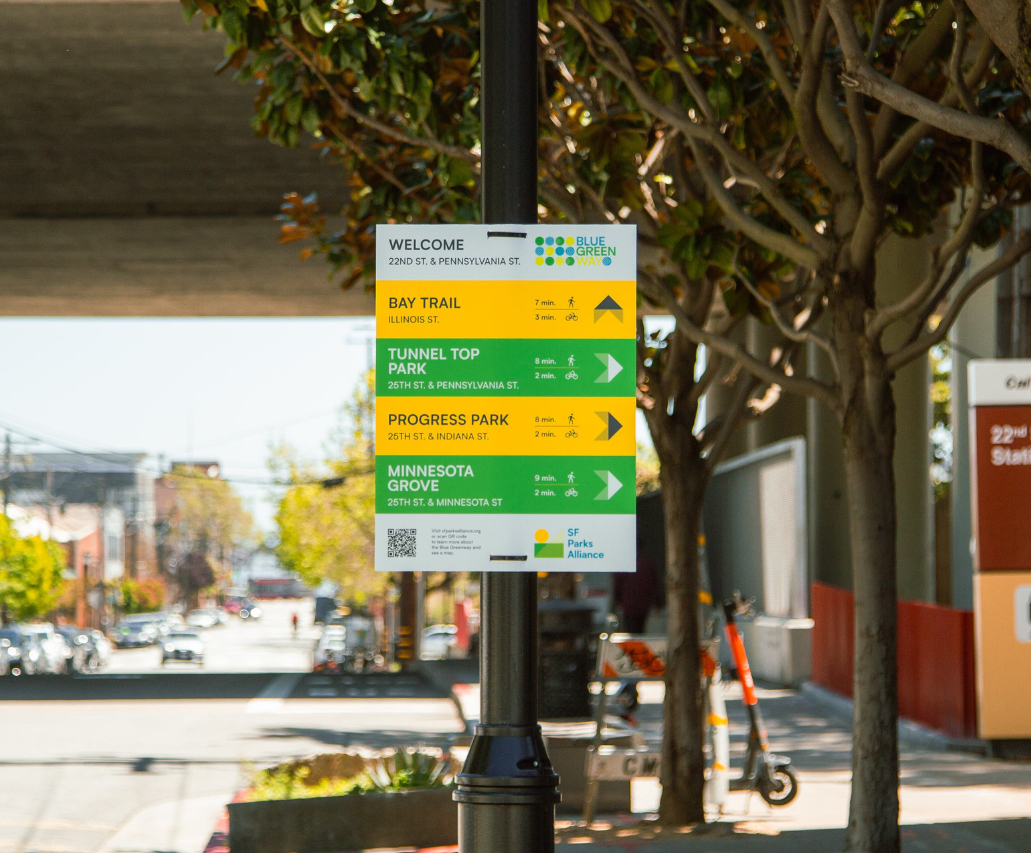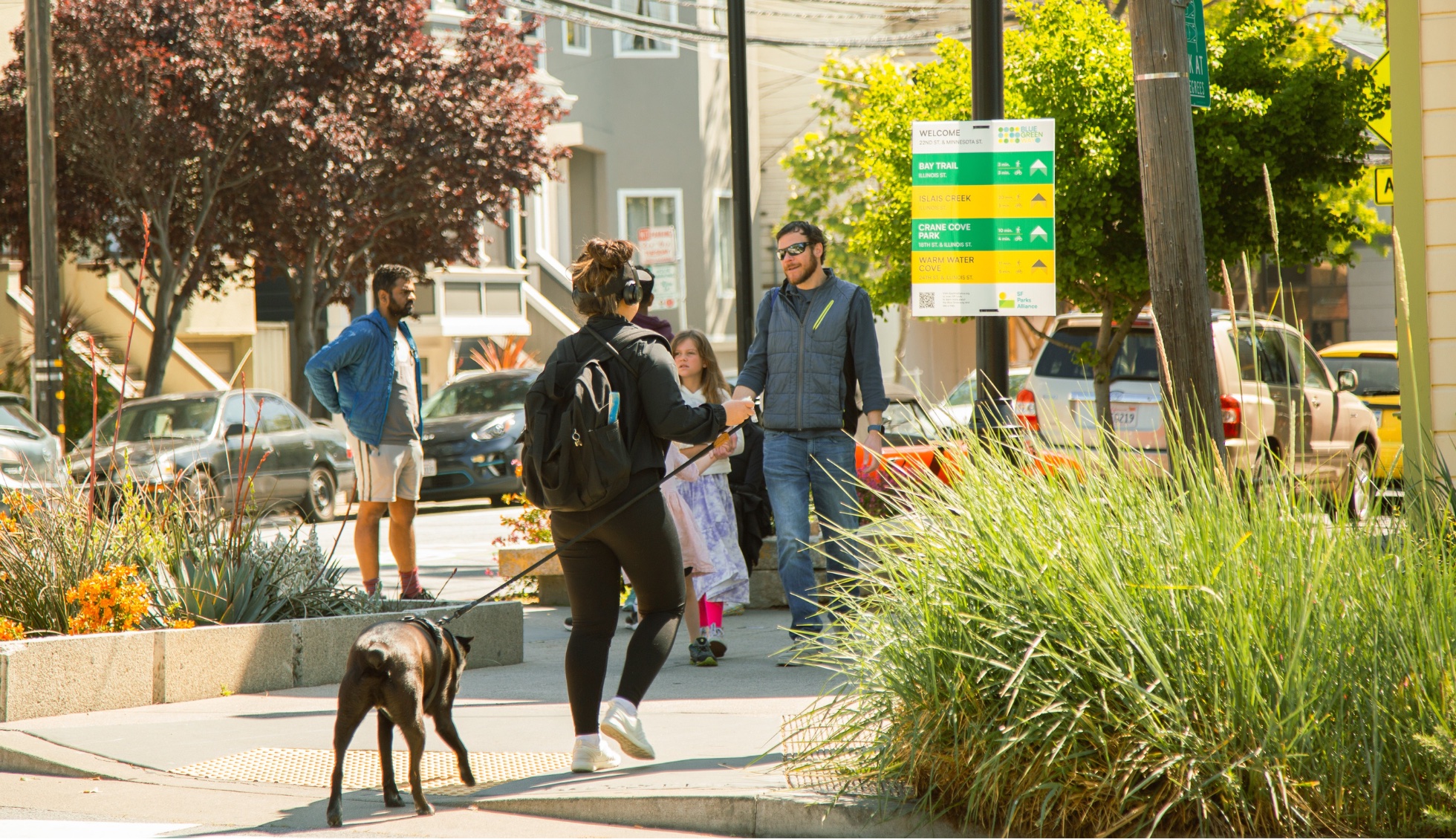Remember the last time you got lost walking or biking around? Pretty frustrating. Difficulty navigating a place can create a negative association with it, but if you have a positive experience traveling around a space, you are more likely to revisit it. This can promote economic growth, form deeper connections between people and a place, and increase feelings of local pride. That’s why the secret art of wayfinding design is vital to the health of public spaces.
Even if you’ve never heard the term wayfinding, it guides your direction every day. Wayfinding is the use of signs and landmarks to help us interact with and move through our environment to get from destination to destination.
The best wayfinding design makes apps unnecessary. Instead of relying on your phone for directions, you can simply use what you see in the world around you to reach your destination. This helps you to develop a mental map that allows you to walk to your local corner store or bus stop on autopilot without assistance from a device.
Wayfinding can be aided by the presence of landmarks that help you orient yourself. For example, murals like Burnside Mural, unique architecture like the Lincoln Park Steps, or familiar parks like Dolores can help us build a mental map of a place. If you are able to identify local landmarks, you can use them to navigate a neighborhood by understanding your location in relation to them. If you get turned around in an unfamiliar neighborhood, a glimpse of Sutro Tower might just help you get back on the right track.
That being said, signage is one of the most straightforward ways to learn about an area, with the best signs being simple and easy to read. Think about when you go to a restaurant. If a menu has a million items, it’s hard to read through all of them, and it’s even harder to make a decision. If there are only a few choices, you can decide what you want much quicker. Muni maps are a great example of simplifying information to make it easy to understand. Thanks to the exclusion of unnecessary information like additional streets, buildings, etc, Muni maps are easy to read and navigate with.
Wayfinding is the use of signs and landmarks to help us interact with and move through our environment to get from destination to destination.
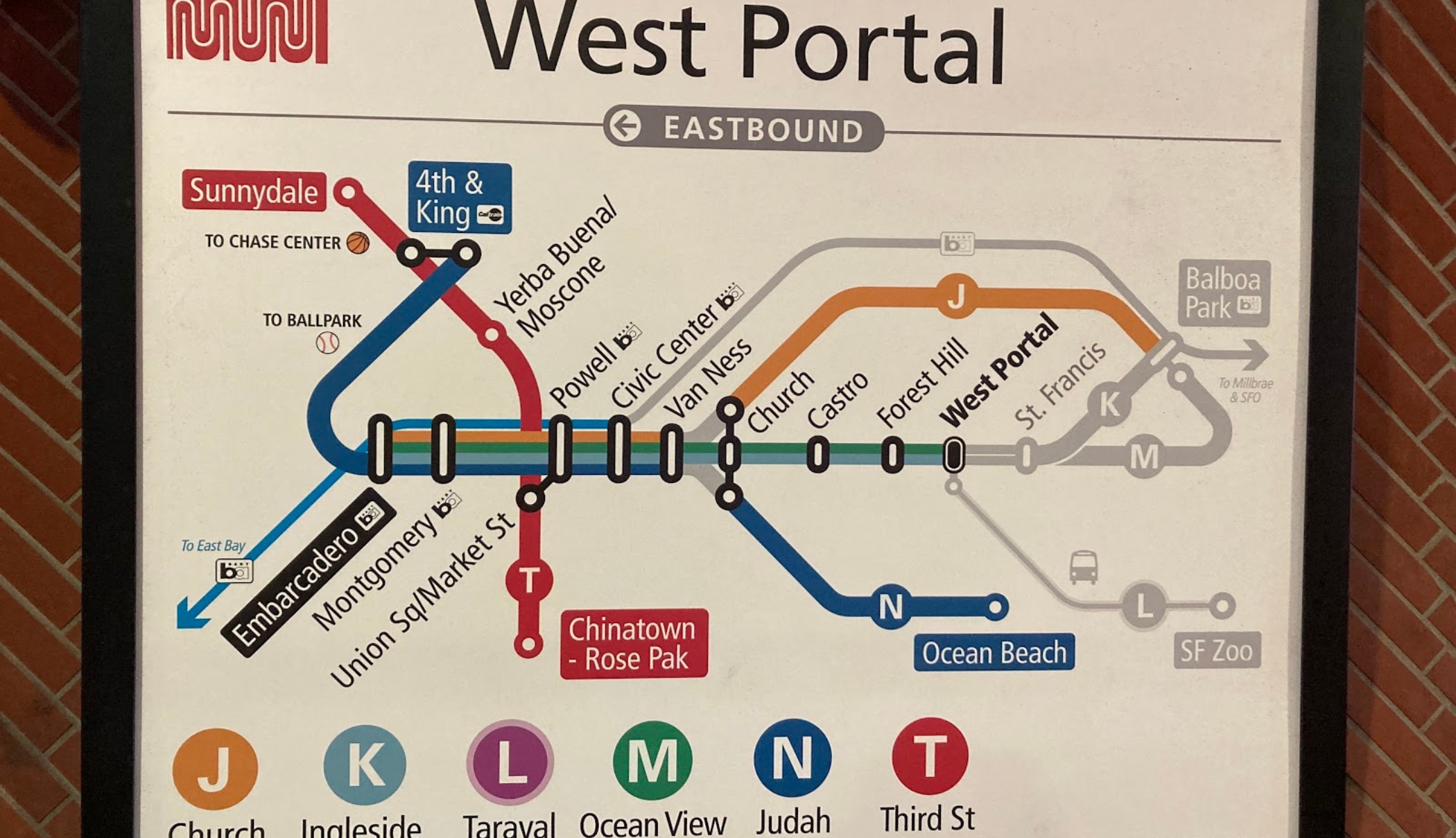
There are plenty of other examples of great wayfinding signage around San Francisco, including many signs created by local communities that help build an area’s unique character. For example, many SF Slow Streets are marked by purple signs to show that the street space is open to cyclists and pedestrians. Additionally, some neighbors have come together to make the SLOW designation clearer and build community by making and installing additional signs for their block.
The long term goal of the Slow Streets project is to create an interconnected network that makes traveling easier, not just within neighborhoods but between them. A crucial element of the project will be the addition of wayfinding signage that showcases the interconnectivity of the network.
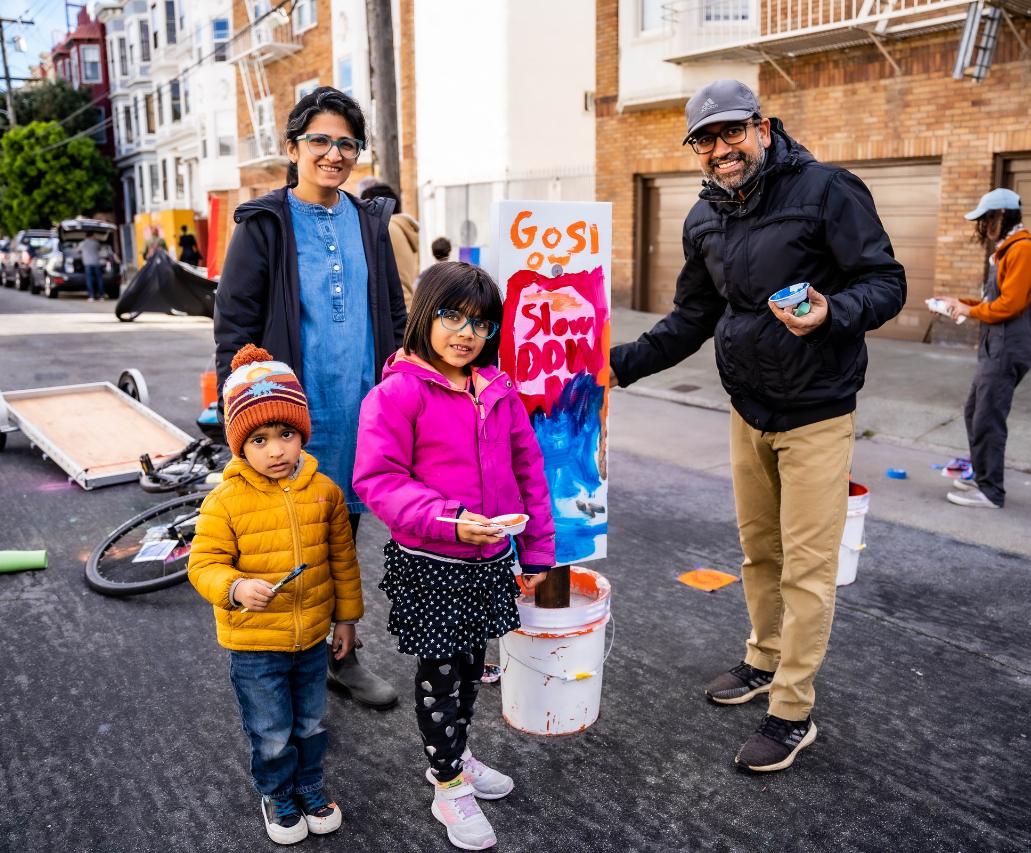
Page St. Paint Party, photographed by Ivy Chen
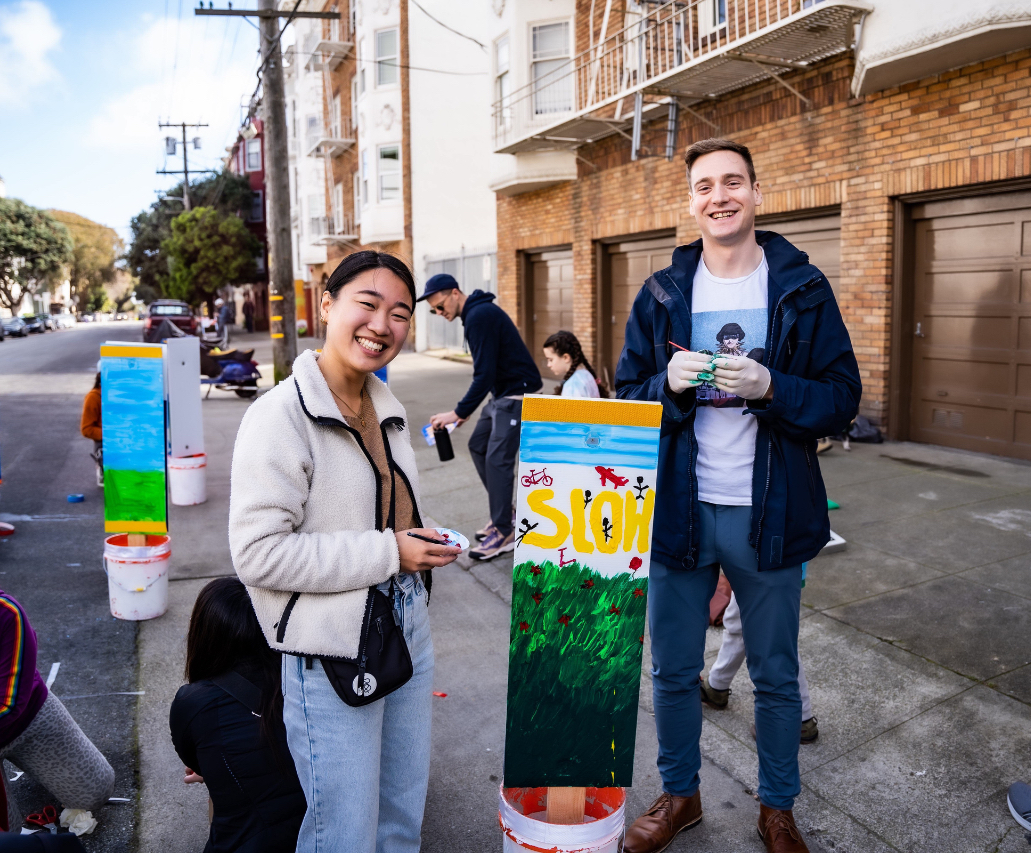
Page St. Paint Party, photographed by Ivy Chen
Another good example of community driven wayfinding signage can be found along San Francisco’s southeast waterfront. SF Parks Alliance recently held a Wayfinding Day for the Blue Greenway, an initiative connecting 13 miles worth of parks and public spaces along San Francisco’s southeast waterfront. The event brought community members together to install signs throughout the Blue Greenway offering directions to nearby parks and travel time to reach them by bike or foot. This signage was also created with community input on what destinations along the Blue Greenway are significant and should be highlighted. Helpful, clear signage like this is an important tool in connecting all 13 miles of the Blue Greenway.
Good wayfinding design should make our city easier to get around, and everyday travel more delightful. Next time you are coming back from work, running some errands, or just enjoying a nice stroll, take a second to notice the landmarks and signals that you use to guide you.
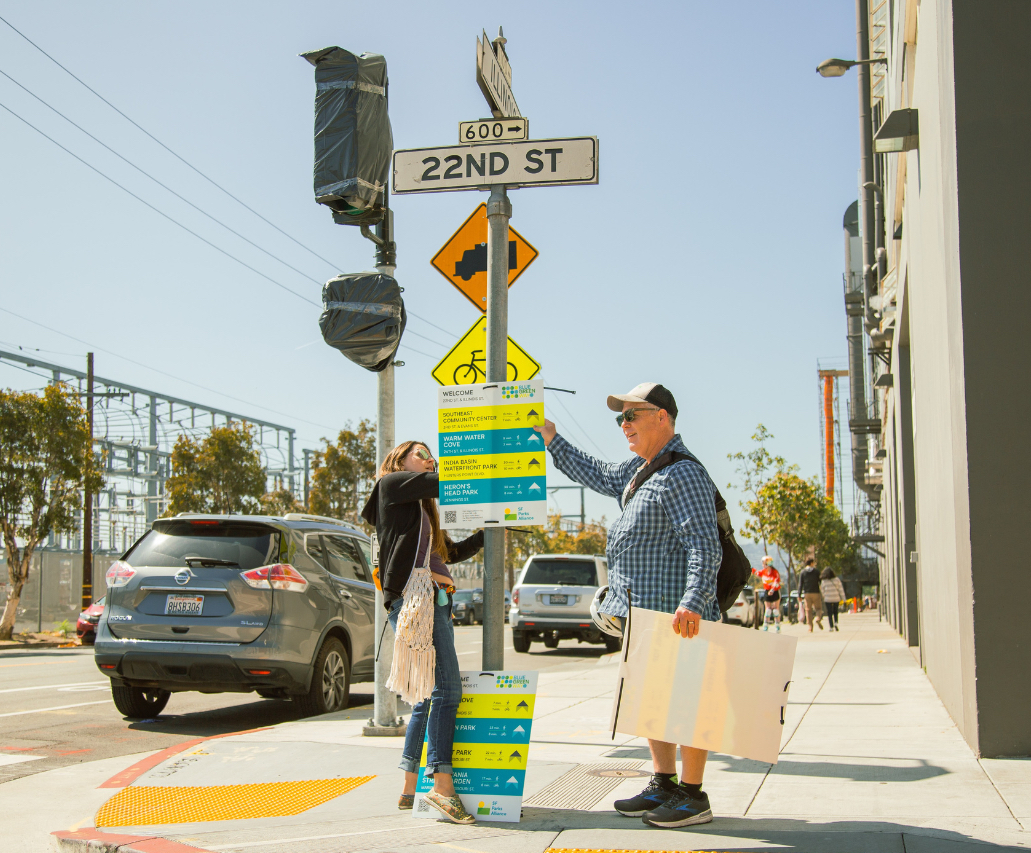
Blue Greenway Wayfinding Day, photographed by Masaki Omori
